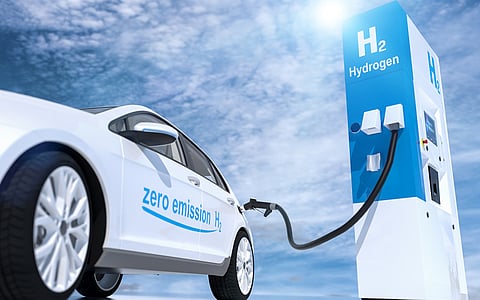

Global hydrogen deployment is gathering pace, but the International Energy Agency (IEA) has warned in its Global Hydrogen Review 2025 that stronger policy support, investments and infrastructure are vital to meet net-zero goals, even as India emerges as one of the fastest movers with plans to produce 5 million tonnes (mt) annually by 2030.
The report highlights that hydrogen demand worldwide is set to rise from about 95 million tonnes (mt) today to over 180 mt by 2030, driven largely by decarbonisation commitments in heavy industry, long-haul transport and power. Yet, most of the growth so far has come from fossil-based hydrogen, and low-emission hydrogen accounts for less than 2 per cent of production.
“Hydrogen is no longer a niche discussion — it is becoming a central pillar of clean energy strategies worldwide,” said IEA Executive Director Fatih Birol. “But we need to close the gap between ambition and action.”
Globally, more than 220 gigawatts (GW) of electrolyser capacity is in various stages of planning, with about 15 GW operational or under construction — a sharp increase from under 1 GW just three years ago. Electrolysers use renewable electricity to produce green hydrogen, which can slash lifecycle emissions by over 90 per cent compared to fossil hydrogen.
Still, the IEA warned that only a fraction of these projects is progressing to final investment decisions (FIDs). Supply chain constraints, permitting delays, and uncertain demand visibility are slowing momentum.
“Announced projects could deliver the volumes needed, but the reality is that too few are reaching the construction phase,” the report cautions. “Clear long-term policy signals are vital to unlock private capital.”
Over 50 countries now have national hydrogen strategies, while dedicated public funding pledges have crossed $280 billion through 2030. The European Union, United States, Japan, and South Korea are leading on subsidy frameworks, carbon contracts for difference, and production tax credits.
The U S Inflation Reduction Act has emerged as a game changer, offering up to $3 per kg of green hydrogen produced, while the EU has launched its Hydrogen Bank to support early projects and import corridors.
“Stable revenue mechanisms and coordinated infrastructure planning are now the decisive factors for market take-off,” the IEA said.
Meanwhile, IEA noted that India is among the fastest movers, with the National Green Hydrogen Mission, aiming to produce 5 mt of green hydrogen annually by 2030, supported by an outlay of Rs 19,744 crore.
India is racing to establish a fully indigenous solar manufacturing ecosystem by 2028, with plans to produce not just solar modules but also cells, wafers and ingots domestically to slash import dependence, create jobs, attract investments and position India as a global clean energy powerhouse, Union Minister for New and Renewable Energy Pralhad Joshi announced on September 11, 2025.
India has already crossed 251.5 GW of non-fossil installed capacity — achieving over half of its 2030 target of 500 GW — and hit 50 per cent of total installed power capacity from non-fossil fuels five years ahead of schedule.
The country has already notified incentives for electrolyser manufacturing and green hydrogen production, while state governments such as Gujarat, Rajasthan, and Odisha are rolling out policies for dedicated renewable zones and port-based hydrogen hubs.
“India has the dual advantage of abundant renewable potential and a fast-growing industrial base,” the report observes. “If it succeeds in lowering production costs, it could become one of the world’s largest exporters.”
Companies like Reliance, Adani, NTPC, and Indian Oil have announced multi-gigawatt projects, while ports such as Mundra and Vizag are positioning to export green ammonia to Europe and Asia. However, the report warns that cost competitiveness hinges on scaling electrolysers rapidly and reducing renewable power tariffs.
The IEA stresses that achieving net-zero scenarios would require green hydrogen to make up 65 per cent of global hydrogen output by 2035, up from just 1 per cent today. This demands faster permitting, better infrastructure planning, and robust demand-creation policies in steel, fertilisers, shipping, and aviation.
“Hydrogen is essential to decarbonise the toughest sectors,” Birol said. “But without faster progress this decade, we risk missing our climate targets.”
The review concludes that coordinated international efforts, carbon pricing, and trade rules are critical to accelerate the clean hydrogen economy — and that India, if it executes its plans, could be one of the biggest beneficiaries of this global shift.